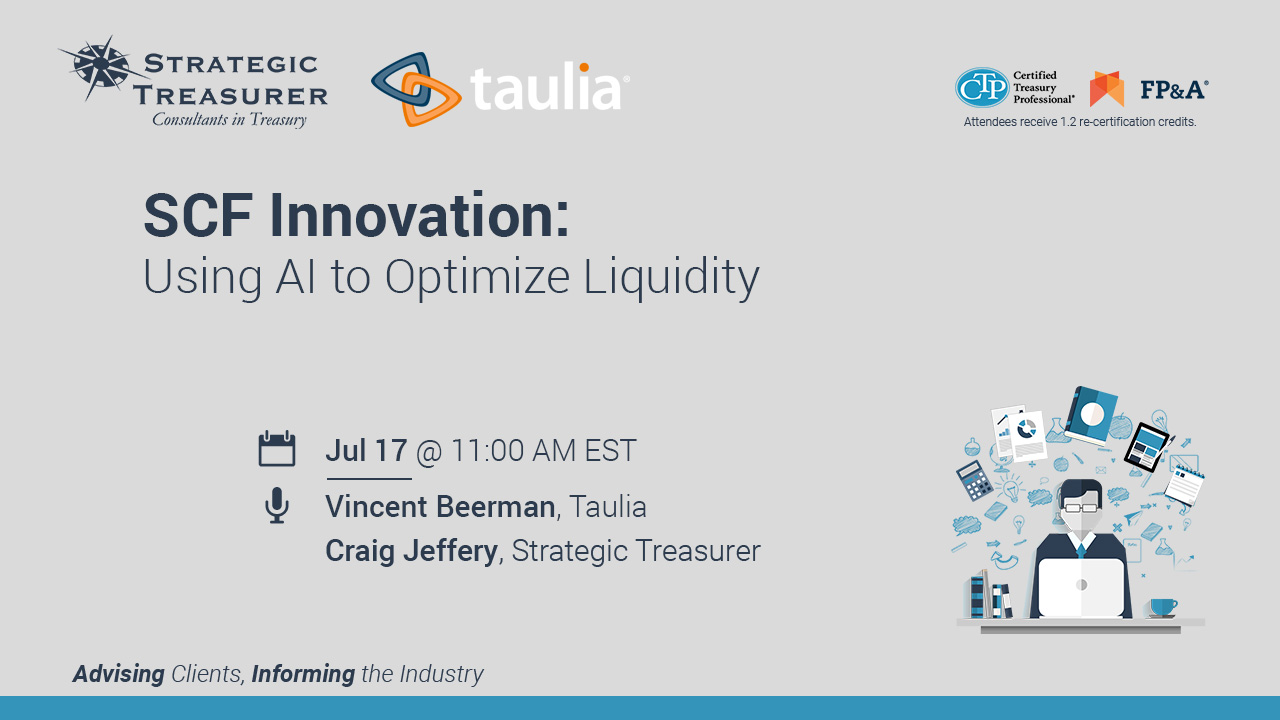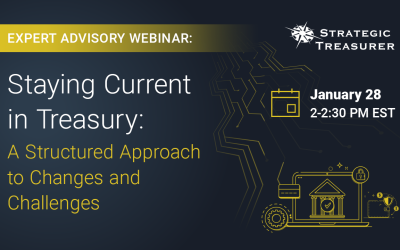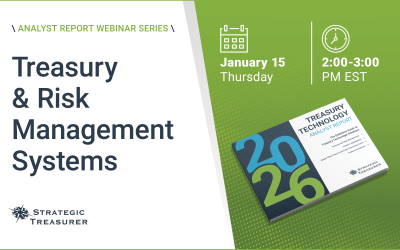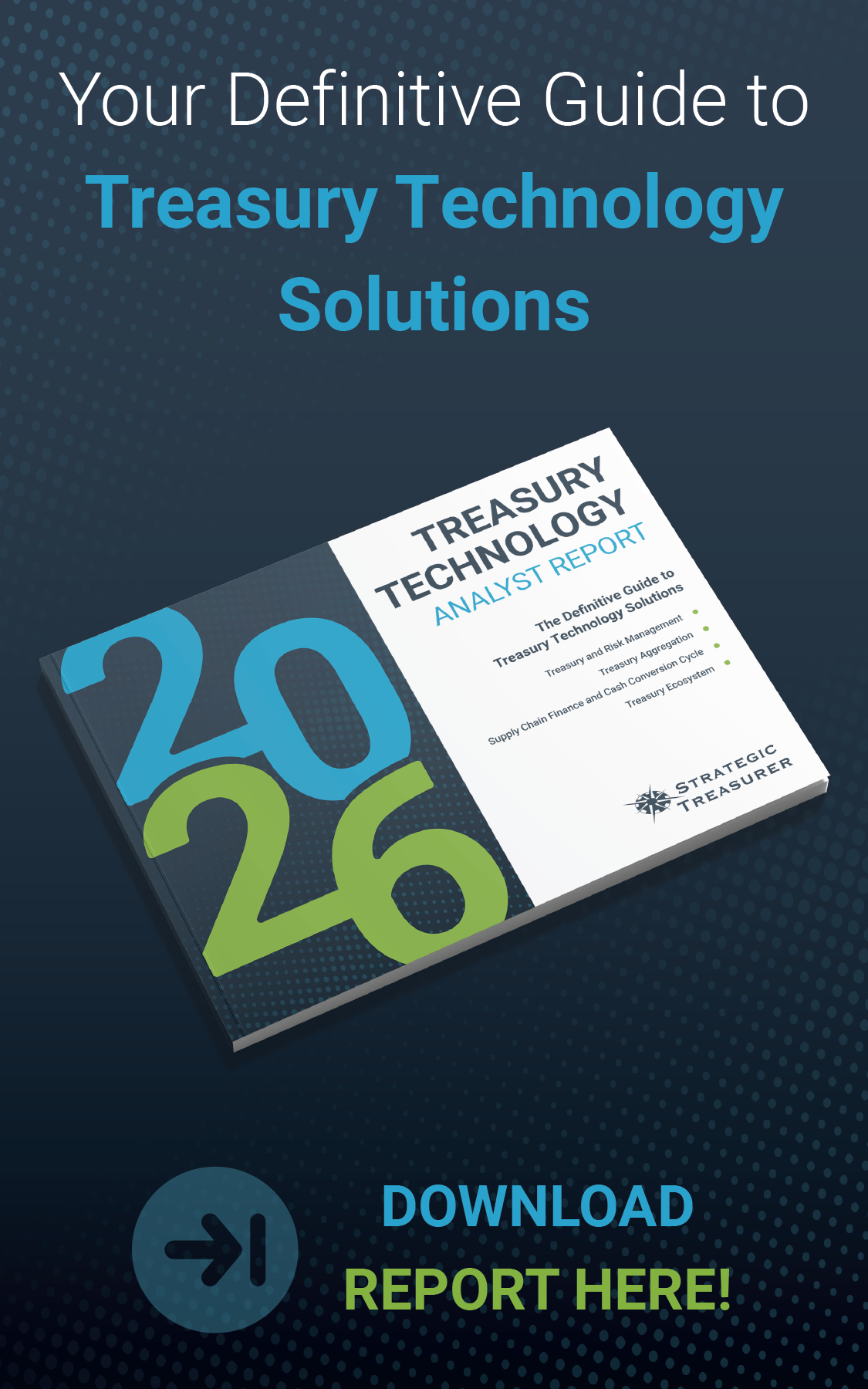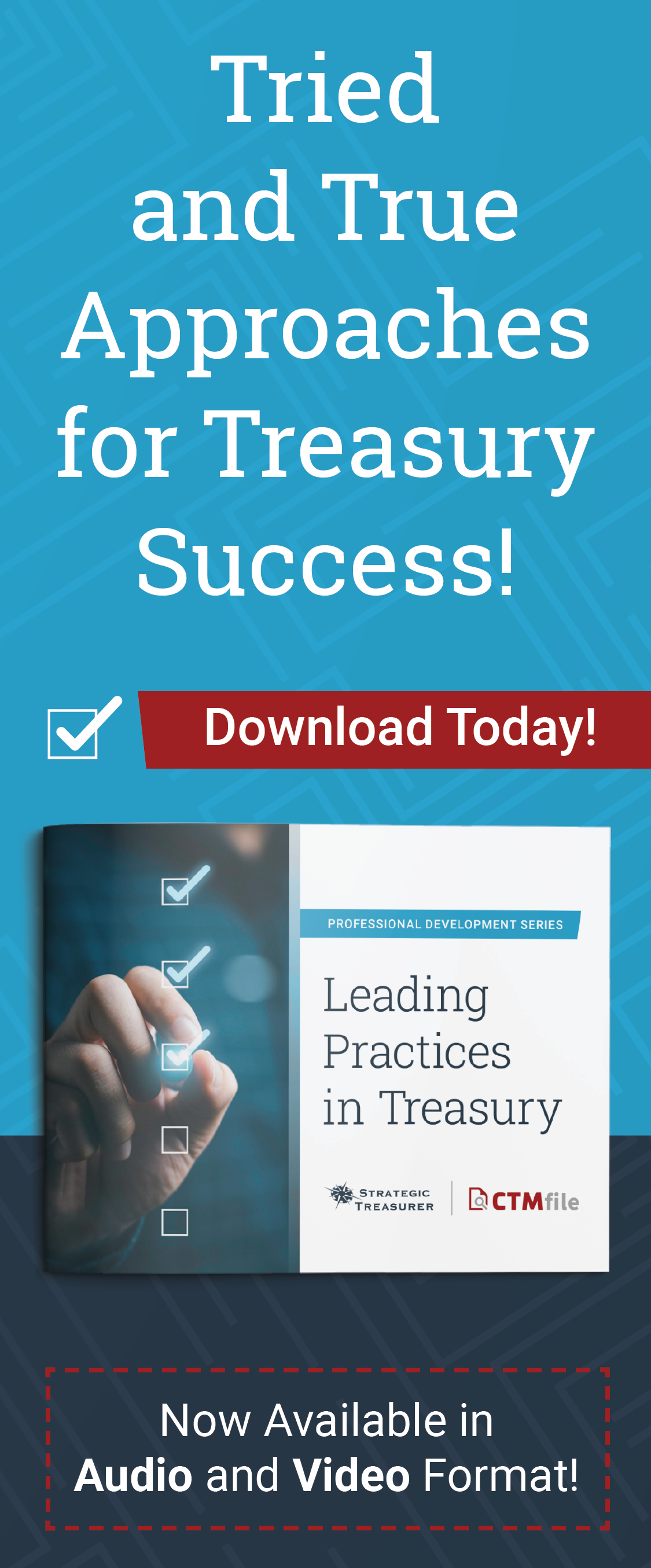Newer technologies, including artificial intelligence (AI), are empowering businesses to analyze cash flows across the supply chain in a different manner.
SCF Innovation: Using AI to Optimize Liquidity
Co-Presented with Taulia
Date: Tuesday, July 17th, 2018
Time: 11:00AM – 12:00PM EST
Where: This is an online event.
Cash and liquidity management has long been a top priority for treasury. Expectations have expanded to include visibility past their own cash positions and funding strategies to cash flows of their suppliers. This expanded view traditionally requires extensive manual effort by treasury. By leveraging the power of AI to analyze vast quantities of 3rd party and supplier data, treasury teams are able to determine which suppliers will take early payment, as well as the optimal time and rates to use. AI can also determine the proper mix of self-funding and third-party cash to employ resulting in better decisions yielding smarter lower risk investments and increasing yield or deploying third-party cash to improve working capital usage.
This session will provide an overview of supply chain finance and treasury’s role within the cash conversion process and then dive into how new technologies and services are providing better insights, expanded automation, and operational efficiency for organizations.
1.2 CTP and FP&A re-certification credits will be given for this webinar.
View replay:
Download the deck from the webinar here:
If you encounter any issues with registration or during the webinar, please contact our team. It can take a few minutes for the confirmation email to come through.
You may also be interested in:
Webinar: Protecting Cashflow: How to Stop Late Payments Before They Start | January 22
Late payments remain a common challenge for treasury and AR teams, increasingly disrupting cashflow, forecasting, and working capital. This webinar will examine why overdue receivables are no longer just a downstream collections issue but an early warning signal of broader payment risk. Join Craig Jeffery of Strategic Treasurer and Pete Younghans of Esker as they explore how treasury and AR leaders can move from reactive collections to proactive cashflow protection, leveraging automation, analytics, and proactive workflows to identify payment risk sooner, reduce DSO, improve forecasting accuracy, and protect organizational liquidity.
Webinar: Staying Current in Treasury: A Structured Approach to Changes and Challenges | January 28
The environment is constantly changing, and treasury can’t stand still. From shifting regulatory requirements to emerging technologies and new industry pressures, corporate teams are expected to stay informed and adapt, often with limited time and resources. This fast-paced webinar explores how organizations can build their treasury “radar” to identify changes and challenges as they develop. See how to monitor the environment and how partnering with an experienced treasury consultancy can better enable organizations to move from a reactive posture to a deliberately proactive approach.
We’ll discuss the value of structured, expert-led updates that condense complex developments into clear, actionable insights. Attendees will learn how quarterly or tri-annual advisory sessions can keep their teams aligned on regulatory shifts, technology advancements, market trends, and operational leading practices. Whether your goal is reducing risk, identifying new opportunities, or simply staying compliant, the right guidance ensures you’re maintaining your radar to be alerted early. Avoid being caught off-guard or unprepared. Join us on this 30-minute webinar to learn how systematic touchpoints can keep your organization in front of emerging changes.
Webinar: Treasury & Risk Management Systems | January 15
As treasury’s core operational platform, the treasury management system (TMS) unifies key activities such as cash positioning, forecasting, payments, and risk oversight within a single platform. This webinar will examine the latest trends shaping the TMS market, including technology innovations, adoption drivers, and leading practices for evaluation and implementation. Join us to explore how developments in AI, automation, and integration are enhancing performance, visibility, and control, and gain insight into how a TMS can strengthen your organization’s efficiency and decision-making.

